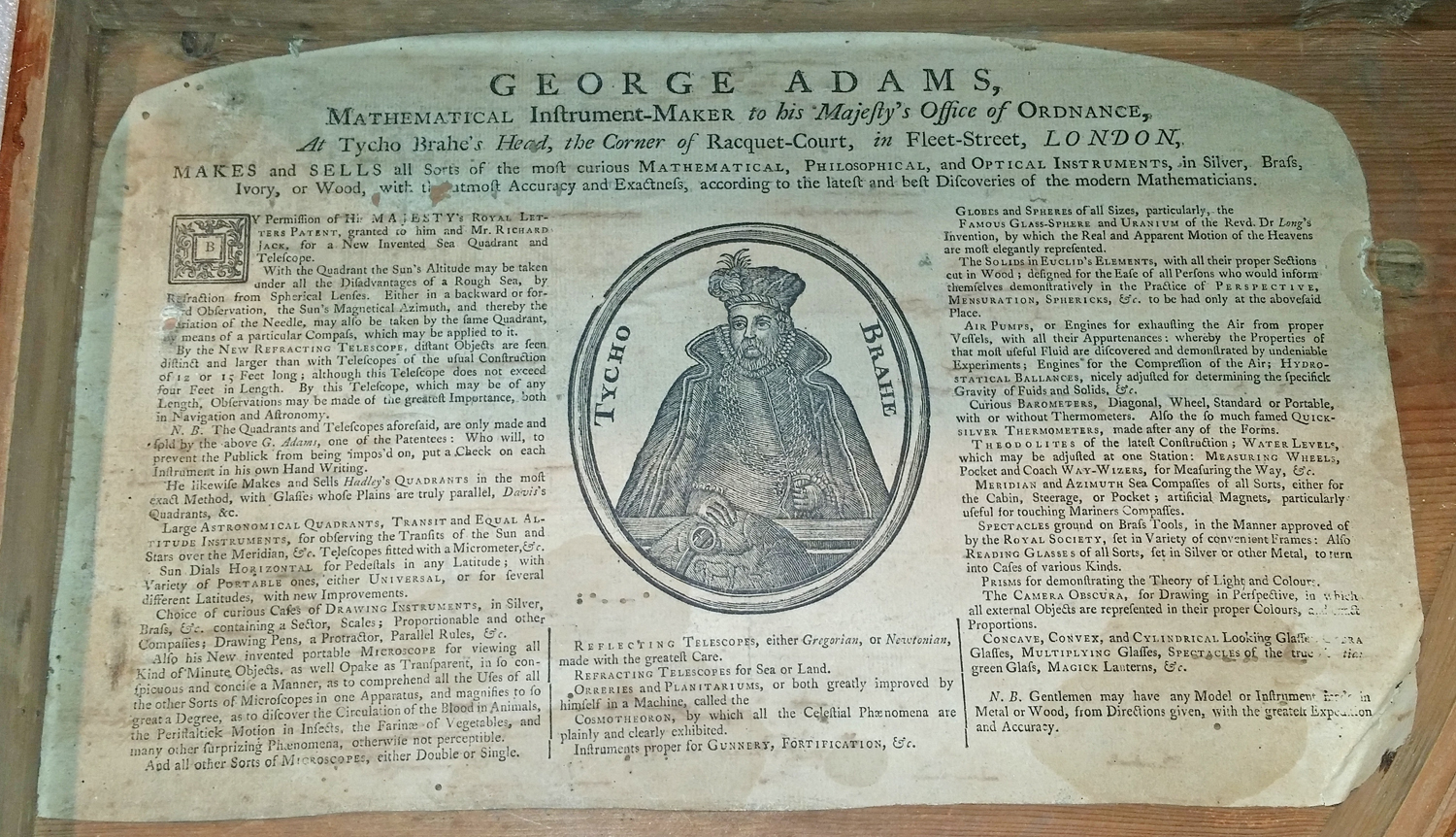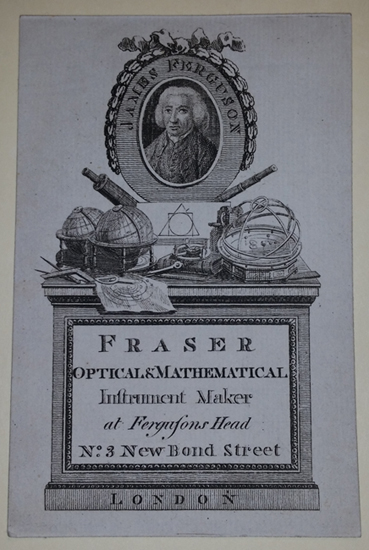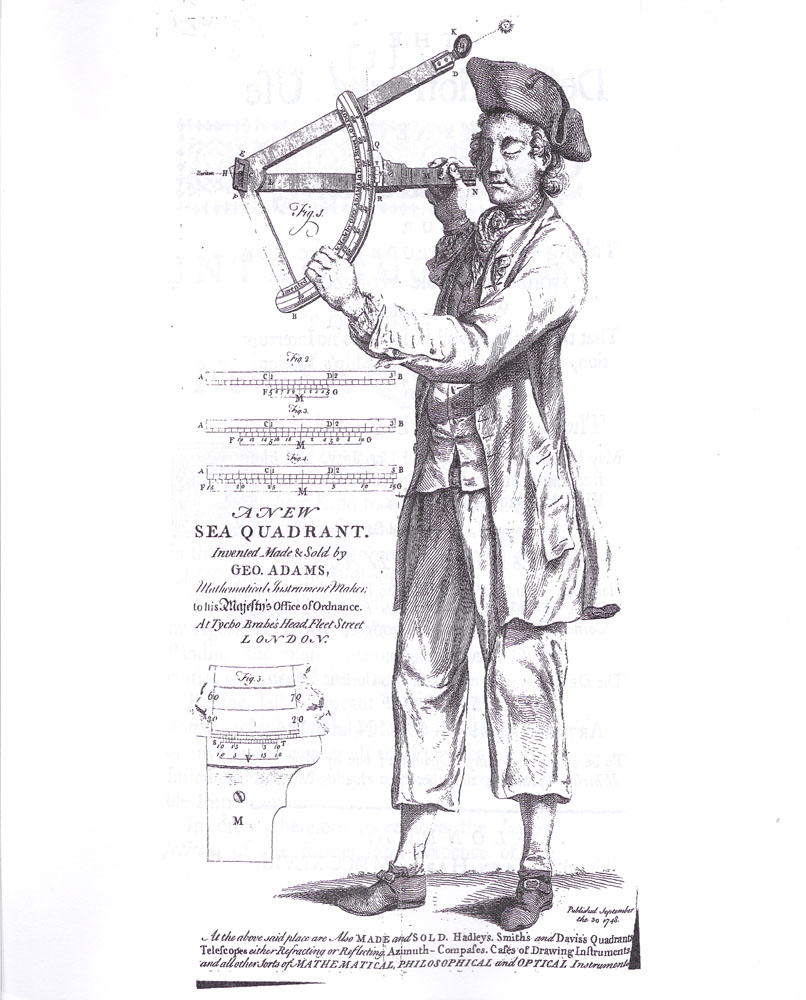Our April Artifact of the Month is also a new object to our collection and something we are all very excited about. It is a sea quadrant made and sold by George Adams, Sr.


There are a couple of factors that make this particular instrument so special. The first is the fact that it is the only known sea quadrant made by George Adams. It was hand-signed, dated and serial numbered by Adams himself, which can still be very clearly seen. It also includes the earliest known trade label for George Adams, which is one of the largest I’ve ever seen on an object. The three extra mica windows were wrapped in a piece of paper that appears to be an early writing sample of Adams, making it all the more interesting.



The other factor that makes it so important and interesting is the provenance of the piece, its history. The piece was purchased in 1774 by François Boyer, who was a Professor of Navigation and Mathematics at the French Royal Navy school in Lorient. He kept a journal of his travels in England, as well as trade cards a receipt for one of his purchases. What is most amazing is that the sea quadrant stayed with the family until it was sold at auction in 2014. They had it for 240 years! That is astounding for something like this. And even better, the piece seems to have seen little to no use as it is in almost pristine condition, including the original case.



Adams stated that his purpose in creating this instrument was to correct the “inconveniences and difficulties” of using a back-staff and to provide an instrument that was more affordable than the expensive octant. He and another instrument maker, Benjamin Cole, were both trying to create new sea quadrants. And despite their efforts, this new instrument was never readily adopted by navigators, which has led to their rarity. As I stated before, this is the only known sea quadrant by George Adams, and there are only three known by Benjamin Cole.


As you can tell from Jeanne’s face, we are all very excited about the arrival of the sea quadrant! And very important to note is that purchases like this would not be possible without kind benefactors. In this case, Peter Ifland, who has worked with the museum for years regarding scientific and navigational instruments. We lost him last year, but he will forever be immortalized for his contributions in this field and for every wonderful thing he has done for us.